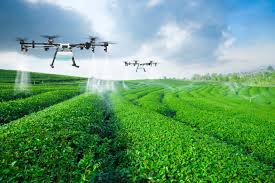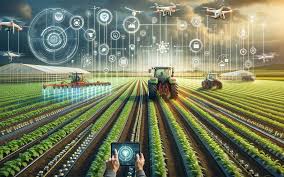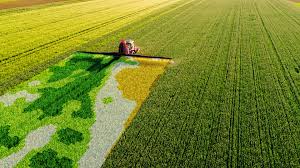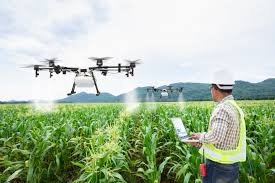Precision agriculture is a modern farming approach that uses technology to manage crops and farmland more efficiently. This method aims to enhance productivity and reduce waste by making precise decisions based on data. By applying the right amount of inputs like water, fertilizers, and pesticides at the right time and place, farmers can achieve better yields while minimizing environmental impact.
This article will explore the key components of precision agriculture, emphasizing the importance of technology and data analysis.
Importance of Technology in Agriculture
Technology plays a crucial role in modern agriculture, transforming traditional farming practices into data-driven strategies. Here’s why technology is essential in agriculture:
1. Increased Efficiency: Technology allows farmers to optimize the use of resources. For instance, using GPS-guided equipment ensures that inputs are applied accurately, reducing waste and saving costs.
2. Enhanced Crop Management: By utilizing sensors and drones, farmers can monitor crop health and soil conditions in real-time. This helps in making informed decisions about irrigation, fertilization, and pest control.
3. Higher Yields: With precise application of inputs based on data analysis, farmers can improve crop yields. This means more food can be produced on the same amount of land.
4. Environmental Sustainability: Technology helps minimize the negative environmental impacts of farming. Precision agriculture reduces chemical runoff, conserves water, and promotes biodiversity.
5. Economic Benefits: By increasing efficiency and yields, technology can lead to higher profits for farmers. Better resource management also lowers production costs.
Key Technologies in Precision Agriculture

Precision agriculture incorporates various technologies that help farmers make better decisions. Here are some of the key technologies used in this approach:
1. Global Positioning System (GPS): GPS technology enables farmers to navigate their fields with accuracy. It allows for precise application of fertilizers, seeds, and pesticides, ensuring that the right amounts are used in the right places.
2. Geographic Information Systems (GIS): GIS is a system that captures, analyzes, and manages spatial data. Farmers use GIS to map soil types, crop yields, and other critical information to make informed decisions about land use and management.
3. Remote Sensing: This technology uses satellite or aerial imagery to assess crop health and monitor changes in land use. Drones equipped with cameras can provide detailed images of fields, helping farmers identify problem areas.
4. Soil Sensors: These sensors measure soil moisture, temperature, and nutrient levels. The data collected helps farmers determine when to irrigate and how much fertilizer to apply.
5. Variable Rate Technology (VRT): VRT allows farmers to apply inputs at varying rates across a field. For example, fertilizers can be applied more heavily in nutrient-deficient areas and less in areas with adequate nutrients, optimizing resource use.
6. Automated Equipment: Tractors and harvesters equipped with advanced technology can operate autonomously or semi-autonomously. This reduces labor costs and increases efficiency during planting and harvesting.
Data Collection Methods
Collecting accurate data is essential for effective precision agriculture. Here are some common methods used for data collection:
1. Soil Testing: Farmers regularly test soil samples to analyze nutrient levels, pH, and organic matter content. This information helps in making decisions about fertilization and crop selection.
2. Crop Yield Monitoring: By using yield monitors installed in harvesters, farmers can collect data on crop yields across different parts of the field. This helps in understanding the effectiveness of management practices.
3. Remote Sensing Data: Aerial imagery and satellite data can be used to monitor crop health, water stress, and growth patterns. This data can be collected regularly throughout the growing season.
4. Weather Stations: Local weather stations provide data on temperature, humidity, rainfall, and wind speed. This information helps farmers make decisions about planting, irrigation, and pest control.
5. Sensors and IoT Devices: Internet of Things (IoT) devices can be installed in fields to collect real-time data on soil moisture, temperature, and other environmental factors. This data can be accessed remotely, allowing for timely decisions.
6. Farmer Reports: Farmers can keep detailed records of their activities, including planting dates, input applications, and pest occurrences. This qualitative data can be valuable when combined with quantitative data.
Analyzing Agricultural Data
Once data is collected, it must be analyzed to derive meaningful insights. Here’s a step-by-step guide to analyzing agricultural data effectively:
1. Data Organization: Start by organizing the collected data into categories, such as soil health, crop yields, weather conditions, and pest occurrences. This makes it easier to analyze and draw conclusions.
2. Use Software Tools: Utilize software programs specifically designed for agricultural data analysis. These tools can help visualize data trends and generate reports. Popular software includes GIS tools, farm management systems, and data analytics platforms.
3. Identify Patterns: Look for patterns in the data that can inform decision-making. For example, you might notice that certain areas of your field consistently produce higher yields. Understanding why this occurs can help you optimize practices in lower-yield areas.
4. Compare Data Over Time: Analyze how your data changes over different growing seasons. This comparison can highlight the effects of different management practices, weather patterns, or soil amendments.
5. Make Data-Driven Decisions: Use the insights gained from your analysis to make informed decisions about crop management, irrigation, fertilization, and pest control. Implement changes based on what the data reveals about your farm’s unique conditions.
6. Monitor Outcomes: After implementing changes, continue to monitor the results. Collect new data to see if the adjustments lead to improved crop health and yields. This ongoing process helps refine practices and improve overall efficiency.
Decision-Making Processes in Precision Agriculture
Effective decision-making is critical in precision agriculture. Here’s a step-by-step guide to how farmers can make informed decisions using data and technology:
1. Data Collection: Farmers start by gathering data from various sources, including soil tests, weather stations, and yield monitors. This data is essential for understanding the current conditions of their fields.
2. Data Analysis: After collecting data, farmers analyze it to identify trends and patterns. For example, they may look at soil nutrient levels across different areas of a field to determine where to apply fertilizers.
3. Setting Objectives: Farmers need to define clear goals based on the data analysis. These goals could include increasing yields, reducing input costs, or minimizing environmental impact.
4. Formulating Action Plans: Once objectives are set, farmers develop action plans that outline specific steps to achieve their goals. For example, if soil data indicates a nutrient deficiency, an action plan may involve applying targeted fertilizers.
5. Implementing Solutions: Farmers execute their action plans, using technology such as GPS-guided equipment for precise application of inputs. This helps ensure that the right amounts are applied where needed.
6. Monitoring Outcomes: After implementation, farmers continuously monitor the results. They collect new data to assess whether their decisions lead to the desired outcomes, such as improved crop health and yields.
7. Adjusting Strategies: Based on the outcomes, farmers can adjust their strategies. If certain practices are not working as expected, they may need to refine their approach or try new techniques.
Read Also: The Most Lucrative between Production of Fish Fingerlings or Raising them to Table Size
Optimizing Resource Use with Technology

Optimizing resource use is a primary goal of precision agriculture. Here’s how technology plays a role in achieving this:
1. Efficient Irrigation: Technologies like soil moisture sensors and weather data help farmers determine when and how much to irrigate. This reduces water waste and ensures crops receive the right amount of moisture.
2. Precision Fertilization: Farmers can use data from soil tests to apply fertilizers more effectively. Variable Rate Technology (VRT) allows them to adjust fertilizer application rates based on specific soil needs, minimizing overuse and runoff.
3. Targeted Pest Control: Remote sensing and drones enable farmers to monitor for pests and diseases. By identifying problem areas, they can apply pesticides only where necessary, reducing chemical use and cost.
4. Improved Planting Techniques: GPS technology helps farmers plant seeds at optimal depths and spacing. This ensures better crop establishment and maximizes yields.
5. Enhanced Harvesting Practices: Harvesting technology can collect yield data as crops are harvested. This information helps farmers understand which areas produced the best yields, guiding future planting decisions.
Case Studies of Successful Implementation
Several farmers and agricultural companies have successfully implemented precision agriculture techniques. Here are a few examples:
1. John Deere’s Precision Ag Solutions: John Deere provides farmers with a range of precision agriculture tools, including GPS-guided tractors and data management systems. Farmers using these tools have reported significant increases in efficiency and yield. For instance, a farmer in Iowa increased his corn yield by 15% by using John Deere’s precision planting technology.
2. The Syngenta Case Study: Syngenta collaborated with farmers to implement precision agriculture in developing countries. They used soil mapping and remote sensing to optimize crop inputs. Farmers who adopted these practices saw a 20-30% increase in yields, demonstrating the effectiveness of precision agriculture even in resource-limited settings.
3. The Climate Corporation: This company provides data-driven insights to farmers. One case study showed that a farmer in California used Climate Corporation’s tools to analyze weather data and adjust irrigation practices, resulting in a 25% reduction in water usage while maintaining crop yield.
Read Also: How to Control Feeding Struggle among Fishes in the same Pond
Challenges in Precision Agriculture

While precision agriculture offers many benefits, it also comes with challenges that farmers need to navigate:
1. High Initial Costs: The investment in technology and equipment can be significant. For many small farmers, the upfront costs can be a barrier to entry.
2. Data Management: Managing and analyzing large volumes of data can be complex. Farmers may need training or access to specialized software to make the most of the data collected.
3. Technology Adoption: Some farmers may be resistant to adopting new technologies due to a lack of knowledge or fear of change. Encouraging adoption often requires education and demonstration of the benefits.
4. Connectivity Issues: In rural areas, reliable internet access can be limited, making it challenging to use cloud-based applications and data services effectively.
5. Understanding Local Conditions: Precision agriculture techniques must be tailored to local conditions. What works in one region may not be effective in another, requiring ongoing research and adaptation.
6. Environmental Concerns: While precision agriculture aims to reduce environmental impact, improper use of technology can lead to over-application of inputs. Farmers must be trained to interpret data accurately and make responsible decisions.
Precision agriculture is a revolutionary approach that leverages technology and data to optimize farming practices. By understanding decision-making processes, optimizing resource use, and learning from successful case studies, farmers can enhance productivity and sustainability.
However, challenges such as high costs and data management must be addressed for broader adoption. With continued innovation and education, precision agriculture holds the potential to transform the agricultural landscape, ensuring food security while promoting environmental stewardship.
This comprehensive guide aims to provide a solid foundation for beginners interested in exploring the world of precision agriculture. If you have any questions or need further assistance, feel free to ask!
Do you have any questions, suggestions, or contributions? If so, please feel free to use the comment box below to share your thoughts. We also encourage you to kindly share this information with others who might benefit from it. Since we can’t reach everyone at once, we truly appreciate your help in spreading the word. Thank you so much for your support and for sharing!
Read Also: Everything You Need to Know About Extinction of Animals

